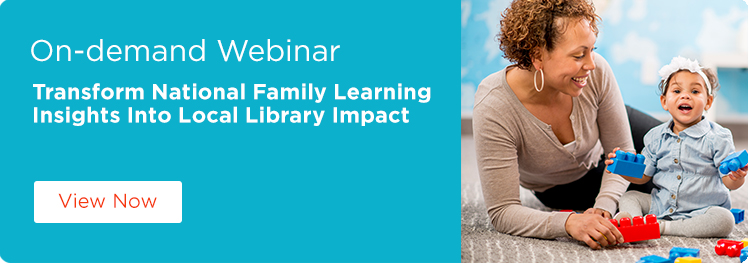
4 Tips for Planning Your Summer Reading Program
Summer reading programs are not one size fits all. Perhaps spring is your library’s busiest season, so you’ll want to frontload your tasks. Or maybe your staff is on top of their game and you can see yourself getting a full year ahead on your planning. Whatever works for you is the right way to do it.
As you plan for next summer, here are a few best practices to keep in mind to help you create your own planning checklist for your library.
- Work backward. Say, for instance, that your program registration opens on May 15. Based on that date, when do you need sponsors finalized so that you have enough time to add their logos and links to your promotional materials?
- Keep in mind how much time you can dedicate to the program each month and how much time each task will require. When you have summer reading program planning to do, you have a lot of other responsibilities on your plate as well. Start by figuring out how much time you will realistically have to dedicate to summer reading planning each month. Then, estimate how long each to-do on your list will take. For instance, creating a list of target sponsors will probably take no more than one or two hours. Developing marketing materials, however, is going to take at least an hour to plan what you need, a couple more hours to write and edit, and then, on top of that, a couple more hours to design. Go down your planning checklist and make a note about how much time each task will take. Then, determine if any of your months look a little too heavy and revise as needed.
- Set deadlines where possible. Be specific about the date by when you’d like to complete a task. By doing this, you’ll ensure that you’re on track throughout the month rather than pushing all of the work to the end of the month.
- Keep stakeholders in mind. If you’ll be working with IT to create summer reading program webpages and website promotional banners, how much lead time does that department need? Checking in with IT team members will allow you to determine realistic deadlines, and it will also give them a heads-up about work that’s coming their way.
As you set deadlines, consider these additional stakeholders:
° Library leadership: Will you need approvals from people outside of your working committees? If so, how long do they normally need for review? Base your deadlines on the amount of time it takes you to complete the task and how long it takes for external reviewers to approve your deliverables.
° Marketing colleagues: Will you be outsourcing your messaging to your marketing team? They likely have a process that they follow for copywriting and design — and a full queue of other projects that they’re working on — so check in with them early. Inquire about what they need from you and the date they need it by in order to meet your self-imposed deadline.
° Other librarians: Your program will be more successful if all of your librarians, from children’s to adult, buy in to it. If you’ll be assigning tasks to these colleagues or looking to them for feedback, check in to see what their workload looks like so you can plan your deadlines accordingly.
° Printers, community partners and other external stakeholders: If you’ll be paying a shop to print posters or flyers, they’ll need your design by a certain date and then they’ll require a couple of days of production time to complete your task. If your local newspaper is running a summer reading program ad for you, they’ll have a due date for your creatives that’s at least a few days before their print date. Check in early so that your external partners are prepared to support you.
For more planning tips, read our Summer Reading Program Checklist.
Related Resources
You Responded, We Listened: Wandoo Reader Survey Results and Plans for 2019
Discover what we learned from our Wandoo Reader customer survey and how we are using the results to enhance current features and develop new functionality for 2019.
read moreExplore the Benefits of Offering Online and In-Person Learning at Your Library
Are you interested in offering online learning opportunities while still continuing to hold in-person programs at your library? Explore the benefits of both learning formats and get ideas on ways they can complement each other.
read more4 Signs that Your Community Is Ready for a Library Mobile App
Are you thinking about investing in a library mobile app, but you’re not sure if your patrons would use it? Use this checklist to help you determine if your community is truly ready for a library mobile app.
read more






